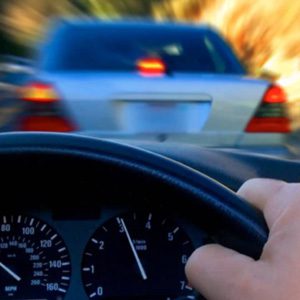
The majority of rear-end collisions are caused by tailgating. To avoid tailgating, follow the "three-second rule": when the vehicle ahead of you crosses a specific point, such as a sign, count "one-thousand-one, one-thousand-two, one-thousand-three." This takes around three seconds. If you reach the same spot before you complete counting, you're following too closely.
Yield the right of way to any emergency vehicle, making sure you are not posing a hazard for other cars or blocking the road. Drive to the right side of the road and stop until the emergency vehicle(s) has passed. However, never stop at an intersection. If you are in an intersection and observe an emergency vehicle, continue through the intersection and then turn right as soon as it is safe and halt.
Work Zone Signs are typically designed like warning signs, but in black and orange. These signs are only used near maintenance, construction, or utility areas to alert drivers that workers and road equipment may be present on or near the highway. They are situated along or near the road. When you encounter these signals, be vigilant and slow down.
When parking on a hill, ensure sure your automobile doesn't slide into traffic if the brakes fail. If you park near a curb facing downhill, turn your wheels toward the curb and select reverse gear or PARK. If there are no curbs, turn your wheels toward the road's edge, either uphill or downhill.
Slow down at the first sign of rain, particularly after a dry stretch. Because oil and dust have not been rinsed away, many roads are especially treacherous at this time. A slippery road will prevent your tires from gaining the necessary grip. Drive slower than you would on a dry road.
It is your obligation to understand the effects of the medications you take. If you must take medication before driving, consult your physician or pharmacist about the medication's effects. Even over-the-counter medications for colds and allergies can cause drowsiness and impair your driving skills.
Advertisement
If a vehicle's conventional disc and drum brakes suddenly fail, the driver should change into a lower gear and repeatedly pump the brake pedal hard and quickly. If that doesn't work, use the parking brake while holding the brake release, allowing the driver to let up if the back wheels lock and the vehicle begins to slide. With the vehicle in low gear, the driver should start looking for a safe area to pull off the road and phone for assistance.
Check your mirrors and look over your shoulder to ensure you are not obstructing traffic in the lane you wish to enter. Leave three seconds between you and the vehicle in front of you. Check that you can stop safely if necessary
Interacting with other passengers becomes a distraction. This can be problematic, especially for teen drivers. Statistics demonstrate that if you are an adolescent driver with other teens as passengers, you are more likely to be involved in a crash than if you are driving alone or with adults.
A diamond-shaped sign on a truck indicates that the load is potentially harmful (gas, explosives, etc.). Officers from the police and fire departments are prepared to respond if the cargo is unintentionally spilled. Vehicles that carry these signs must stop before crossing railroad tracks.